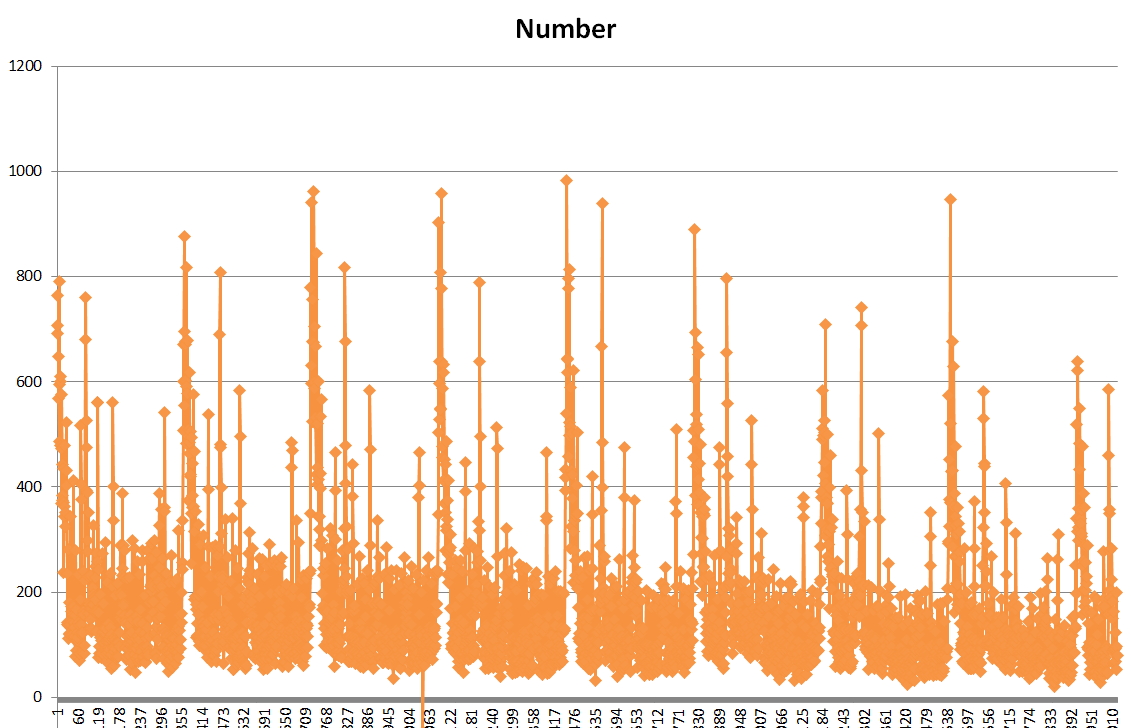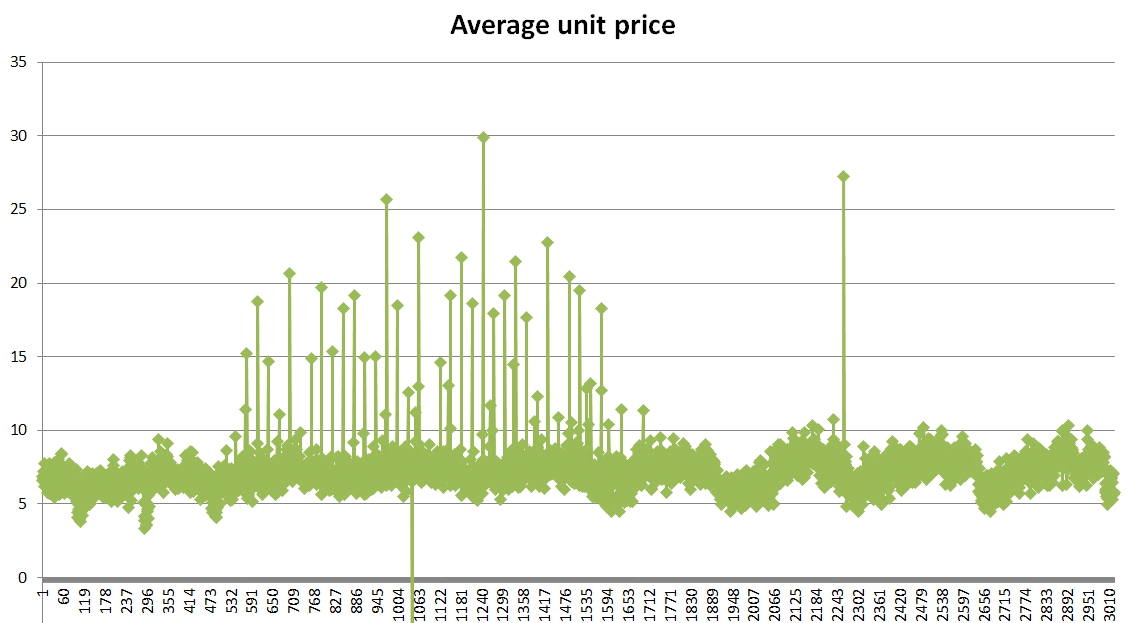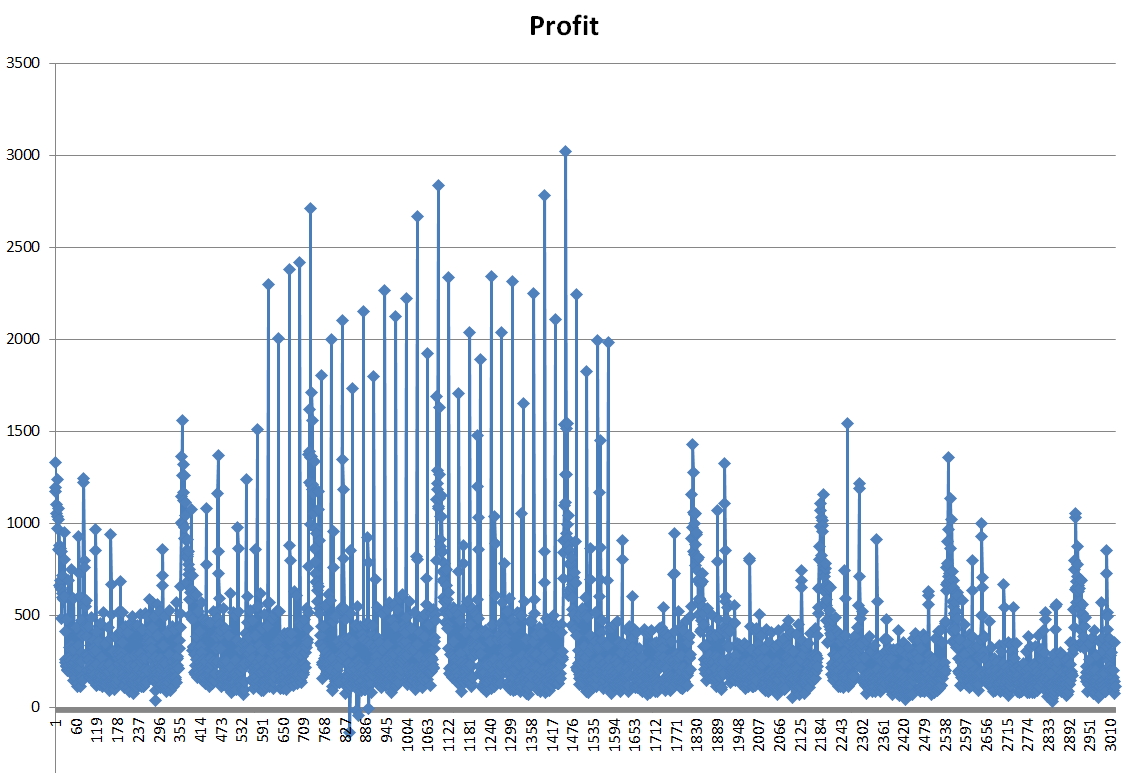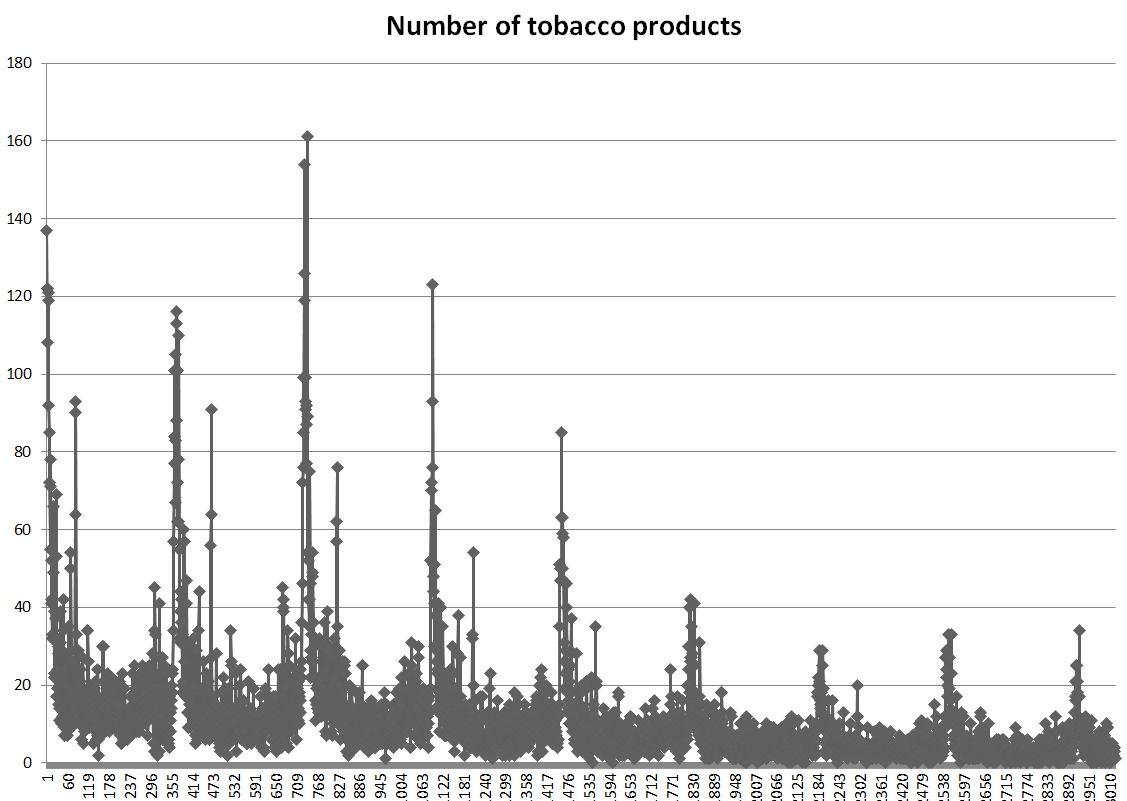This was an interesting result; I found when I was seeing how the magazine ACCC trials were going for their shop. It's been a year, so it's about time to see what big data has to say. This is the number of magazines purchased at the shop over the last eight years. If you look carefully, you can see a slight reduction over time.

The next step is to look at the average price; a slight reduction is acceptable if the average sale is up. Overtime, there is a minor increase as you can see here.

However, the bottom line is showing a drop, so what is the cause of this drop.

This is where you use big data.
What did it find???
Tobacco sales are dropping, as you can see here.

In fact, the tobacco department is now at a stage where it is barely paying its own way. The problem though was that a typical tobacco sale also included about $4.76 of magazine sales. So fewer tobacco customers have resulted in fewer magazine sales. The big drop in tobacco sales was caused when the tobacco had to be hidden from the public. The holiday public (this is a holiday area) did not know that this shop had tobacco, but they knew the supermarket had tobacco so many went to the supermarket, as such they lost much of their tobacco sales about 11 a day at the summer.
It's another example of how SMB businesses are affected differently to larger businesses by the same legislation. I estimate that it has costed them per annum already about $30,000 in profits in magazines. The problem now is if tobacco goes, you can write off in this shop another $8,000 worth of profit in magazines as well.
For those that want to know the actual equation that big data came up with, it is for each day.
Magazine_Profit = 32 + (Number of book sales) + 4.5*(Number of tobacco sales) + 2.6*(Number of confectionery items) + 2.3*(Number of toy items) + 0.01*(Average magazine price)*(Value of the newspapers sold) - 49.3*(on sunday)*(average newspaper price)


